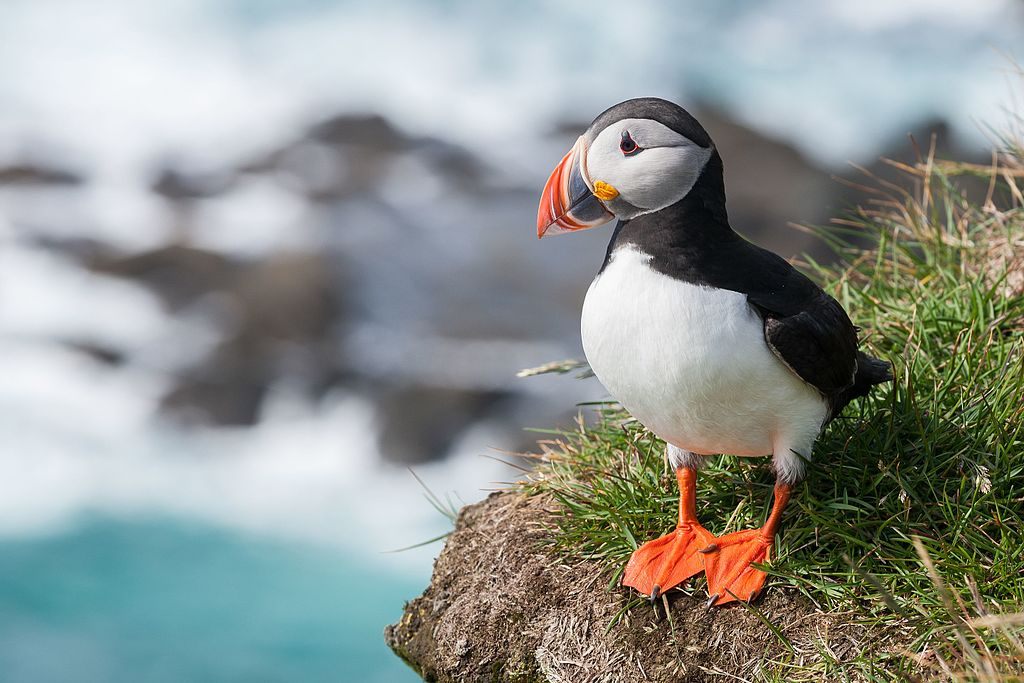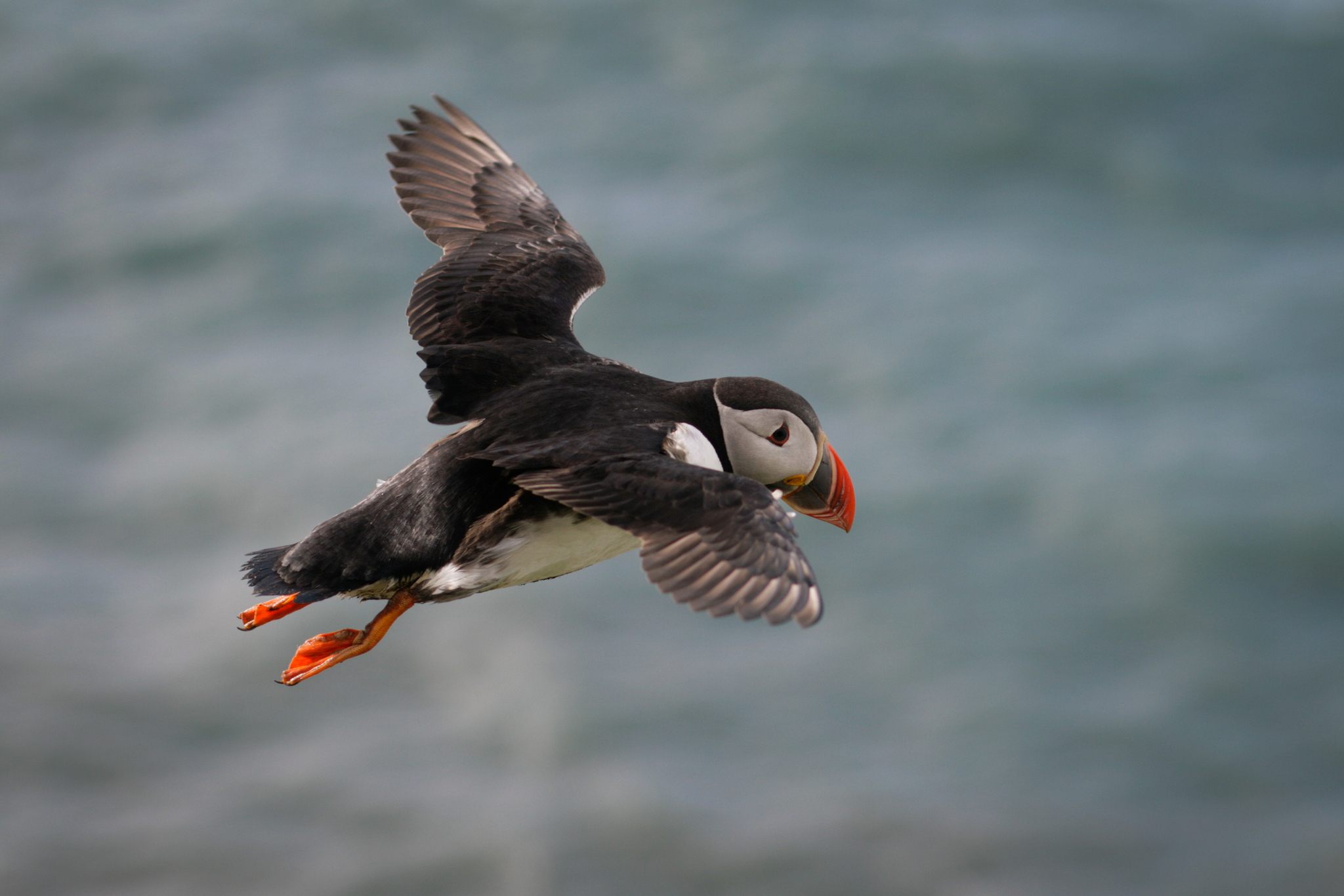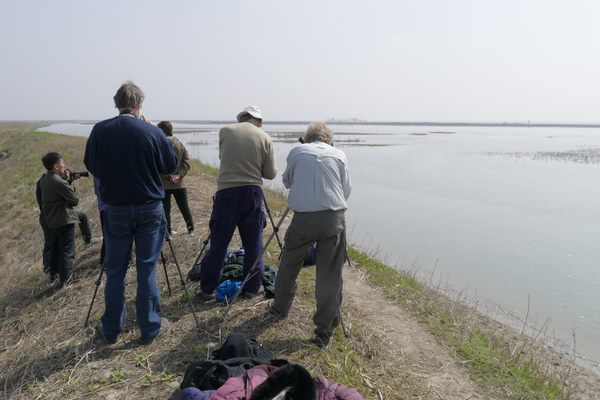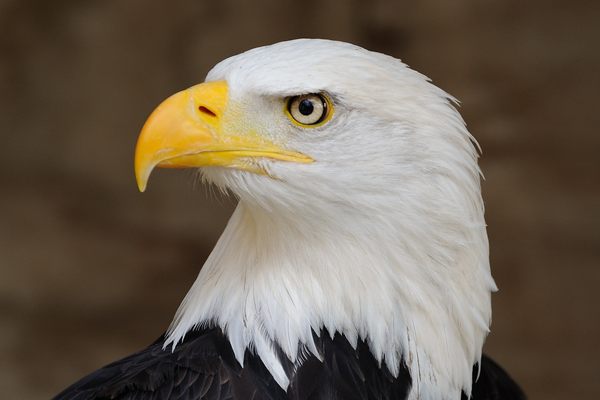Let’s Talk About Puffins
The clowns of the sea need our help.

PUFFIN! (Photo: Richard Bartz/CC BY-SA 3.0)
Right now, environmental groups are lobbying to designate the New England Coral Canyons and Seamounts, a marine area about 200 miles southeast of Cape Cod, as a National Aquatic Monument. This preservation effort is very important for a number of environmental reasons, but one reason stands out as the cutest: it could save the Maine puffins who spend their winters there.
Let’s talk about puffins. They’re cute, curious little seabirds that spend their lives trying to eat delicious fish and breed among the coastal rocks. Unfortunately, humanity is threatening to drive them to extinction. Luckily, there are a number of puffin patrols and rescue societies out there trying to help.
Puffins come from a family of birds known as auks. They live in coastal areas and are instantly identifiable by their black-and-white coloration, thick beaks that turn orange in the spring, and rounded shape. Also known as the “sea parrot,” or the “clown of the ocean,” the adorable birds can be found in a few places across the globe including including along the coast of the North Atlantic and North Pacific oceans.

Fly, you fat little hero! (Photo: Trent McBride/CC BY 2.0)
Their colorful beaks and pudgy stature make them a winsome sight wherever they are found, and their friendly attitude doesn’t hurt either. Also, they’re total goofs. “They are quite flighty, flying off when people come too close in boats and they are also very clumsy on land (particularly landing and taking off), which can be funny,” says Claire Thorpe, People and Wildlife Officer for the Alderney Wildlife Trust, which looks after a breeding colony on the islet of Burhou in the English Channel. “Overall they have quite a placid temperament—their mating rituals aren’t as aggressive as other seabirds and they seem more curious about humans than anything else.”
But for all of their cute waddling, puffins the world over are facing some daunting environmental challenges.
Puffin advocates like Thorpe and Kress, Director of Audobon’s Project Puffin Seabird Restoration Program, which manages 95 percent of Maine’s puffins, are acutely aware of the dangers facing the world’s puffin populations. “The main challenges for puffins these days are the effects of climate change on their food supply,” says Kress. “Climate change is affecting the food chain from the bottom up. From plankton to foraged fish that the puffins feed on.”
As the world’s oceans warm, fish are dying off or moving to different parts of the ocean, making it hard for puffins to get enough food to raise a chick. As Kress told us, for puffins to get enough food, the right type of fish needs to be available at the right time of year, and in abundance. Even a food fish’s body type can lead to problems. “It has to be just the right shape or they can’t even swallow it,” says Kress.

AAAAAHHHHHHH. (Photo: Jacob Spinks/CC BY 2.0)
While the changing global climate is easily the most devastating factor affecting puffins, it is far from the only thing putting them at risk. According to the Witless Bay Puffin and Petrel Patrol, which endeavors to protect the largest colony of Atlantic Puffins in the world, encroaching civilization presents a whole other problem. On their website, they state that as humans move in closer to the puffins’ habitat, baby chicks are confusing the artificial lights from homes and businesses for the stars that would usually guide them to sea.
“The vast majority of seabirds navigate by following the horizon, which always has a glow,” says Thorpe. “[Seabirds] mostly (including puffins), fledge at night without parents as they are protected from predation at this time. So artificial lights can disrupt and confuse the birds causing them to fly towards towns.” While puffins don’t fly as they leave the nest—they generally walk or swim—the problem is just as pronounced for them.
Then of course, there are the predators. Despite their imposing beaks, puffins make for easy pickings for a number of predators. The colony Thorpe helps protect has seen rodents decimate the local puffin population by eating the helpless chicks right in their underground nests. Larger gulls can also be a danger. Even humans have historically hunted puffins for their feathers and meat. While the practice of eating puffin has fallen out of favor across much of the world, the people of the Faroe Islands still see the puffin as food.
For all the problems facing the clownish bird, our efforts to save and preserve them are proving quite effective. Puffin conservation projects have employed a number of different techniques to try to give puffins a leg up in their breeding numbers. Among the techniques Kress and Project Puffin have employed include using wooden puffin decoys to make returning birds feel more at home, and creating protective nesting boxes that provide shelter and a reliable breeding spot to return to. Using these techniques, they’ve managed to rebuild historic puffin colonies that had died out, by relocating puffins from to Newfoundland to Maine.
“Our strategy is to make sure the conditions are proper for nesting,” says Kress. “It’s not a big problem if they don’t raise a chick every year, because they’re long-lived, they can live to be 20 years or more. But if they’re not being successful year after year, that does reduce the population, and that seems to be what’s happening in Iceland right now, where most puffins live.”

Back out to sea. (Photo: Anita Ritenour/CC BY 2.0)
Live puffin cams have also become a popular and effective method of raising the public’s awareness of the birds. “I think some of the best memories for me working with the puffins was when they really began to show up on our cameras,” says Thorpe. “I run the education project and it is quite integral to it that the puffins are present some of the time for the children to see—so once the breeding season really got under way there was lots of activity.” Both Project Puffin and the Alderney Wildlife Trust have live streams of their puffins (you’re welcome).
One person that Kress hopes is watching those streams is President Obama. Project Puffin is currently campaigning for the president to help protect the birds by designating the Coral Canyons and Seamounts as a national monument. Conservation efforts like this, and Adopt-A-Puffin programs, help ensure these little weirdo birds have a future as bright as their beaks.















Follow us on Twitter to get the latest on the world's hidden wonders.
Like us on Facebook to get the latest on the world's hidden wonders.
Follow us on Twitter Like us on Facebook